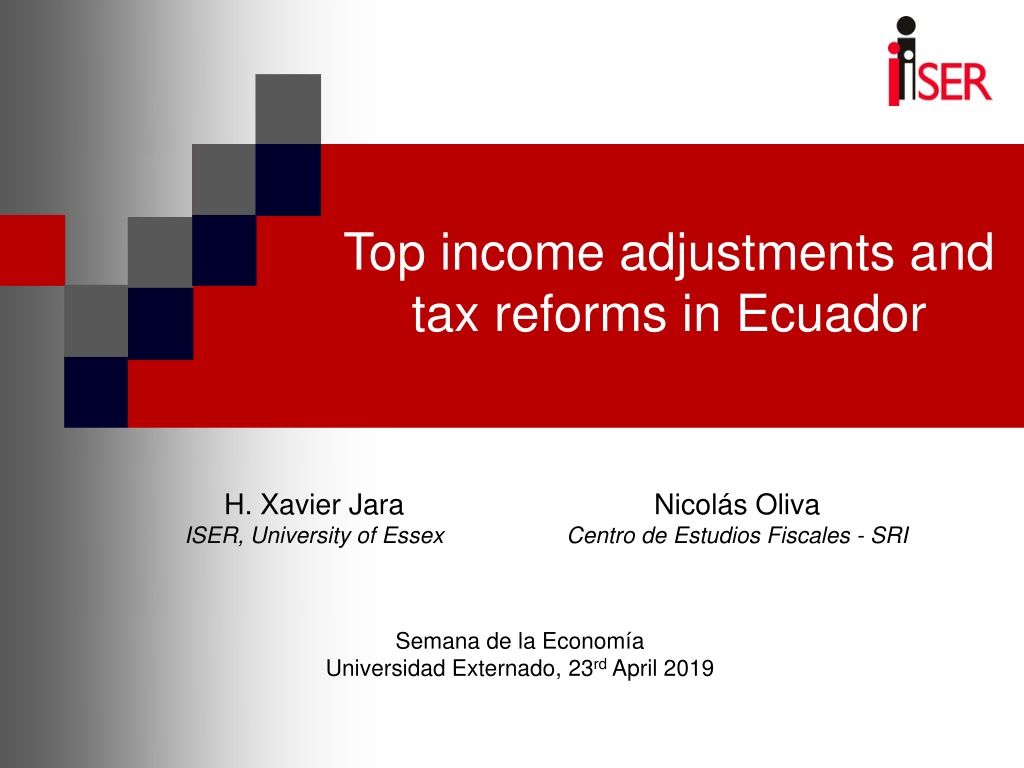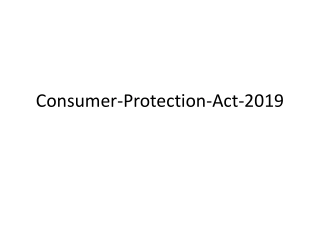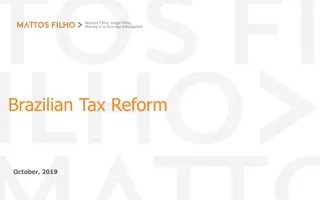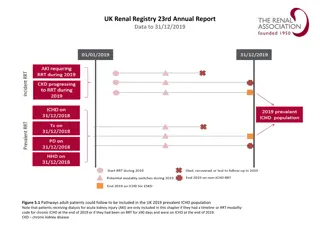
Income Adjustments and Tax Reforms in Ecuador
Explore top income adjustments and tax reforms in Ecuador, focusing on the under-coverage of high incomes in household survey data, the use of tax records for corrections, and the impact on income inequality, tax revenue, and work incentives. The study aims to assess the extent of top income under-coverage, adjust survey data with tax records, and analyze the outcomes. Key sections include Introduction, Data and Methodology, Empirical Results, and Conclusion.
Download Presentation

Please find below an Image/Link to download the presentation.
The content on the website is provided AS IS for your information and personal use only. It may not be sold, licensed, or shared on other websites without obtaining consent from the author. If you encounter any issues during the download, it is possible that the publisher has removed the file from their server.
You are allowed to download the files provided on this website for personal or commercial use, subject to the condition that they are used lawfully. All files are the property of their respective owners.
The content on the website is provided AS IS for your information and personal use only. It may not be sold, licensed, or shared on other websites without obtaining consent from the author.
E N D
Presentation Transcript
Top income adjustments and tax reforms in Ecuador H. Xavier Jara ISER, University of Essex Nicol s Oliva Centro de Estudios Fiscales - SRI Semana de la Econom a Universidad Externado, 23rd April 2019
Motivation Household survey data is usually used for distributional analysis but there are issues of underreporting and under-coverage of top incomes This might be particularly important in Latin America and other developing regions. Most studies assess the effect of top income corrections on income inequality. However, top income adjustments are also needed to assess the effect of income tax reforms.
Aim Assess the extent of top income under-coverage in household survey data in Ecuador Adjust top income information in household survey data with information from tax records and analyze the effect on: Income inequality Tax revenue Work incentives for actual and hypothetical policies
Plan of the talk Introduction Data and methodology Empirical results Conclusion
1. Introduction The growing literature on top incomes has highlighted the insufficient coverage of top income groups in survey data (Atkinson, Piketty and Saez, 2011) Recent studies have focused on: The evolution of income inequality at the top using administrative data (Piketty 2001; Piketty and Saez 2003; Atkinson 2005; Alvaredo and Londo o 2013; Cano 2014) Correcting inequality indicators with information on survey and administrative data (Atkinson-Alvaredo approach). Fewer studies have combined data sources directly, adjusting survey data with information from tax records (Bach et al. 2009; DWP 2016; Burkhauser et al. 2017; Alvaredo et al. 2017) The latter approach is useful not only to obtain corrected inequality indices but to improve the simulation of personal income tax for current and potential policies.
2. Data and methodology Data Top income adjustments: methodology Tax-benefit simulations
2.1. Data (I) Income tax records Income tax return data from the Ecuadorian tax administration (Servicio de Rentas Internas) for 2011. Information on all individuals who have filed taxes (formal workers): 2.7 million observations Detailed information on employment, self-employment and capital income But No information on informal workers (around 60% of working population in 2011) No information on inactive, unemployed or benefit recipients No socio-demographic information (some could be retrieved using data from the civil registry)
2.1. Data (II) Household survey data National Survey of Income and Expenditures of Urban and Rural Households (ENIGHUR 2011-2012). 153,341 individuals. Detailed information on: employment, self-employment, capital income, affiliation to social security (formality), cash transfers, expenditures, socio-demographic characteristics. Input data for ECUAMOD. But Top income under-coverage?
2.2. Top income adjustments: methodology We follow Burkhauser et al. (2017), who use tax data to adjust survey data and then calculate income inequality We focus on employment income (employees represent 90% of the formal workforce) Our simple adjustment proceeds as follows: Select a sample of employees in the survey data comparable to that of the tax records: employees affiliated to social security (formal) Rank individuals by their gross employment income in the two datasets and allocate them to income percentile groups. Calculate average income by income percentile groups in both, the survey and tax records data. Assess the point where top income under-coverage becomes the most apparent. Adjust the incomes of the top X% of employees in the survey by the ratio between the average income in tax records to the average income in survey data.
2.3. Tax-benefit simulations (I) We use ECUAMOD the tax-benefit microsimulation model for Ecuador Developed as part of the SOUTHMOD project First model for a Latin American country developed in EUROMOD ECUAMOD uses data from ENIGHUR 2011-2012 to simulate: Social Insurance Contributions Personal Income Tax Bono de Desarrollo Humano Indirect taxes
2.3. Tax-benefit simulations (II) Analysis takes 2011 policies as starting point For the baseline and adjusted input data, we calculate: Total tax revenue. Household disposable income. Inequality indicators. Work incentive indicators.
3. Empirical results Top income under-coverage Adjusted income inequality and tax revenue Ex-ante evaluation of tax reforms
3.1. Top income under-coverage (population) Table 1. Population totals by income thresholds (2011) ECUAMOD Tax records (unweighted) 2,716,664 757,029 556,032 383,465 278,554 72,414 29,682 14,300 6,704 Ratio (unweighted) 20,548 6,224 4,164 2,642 1,659 214 53 13 3 (weighted) 2,062,475 524,752 349,150 227,007 151,595 26,658 8,125 3,087 749 All Above 1st tax threshold Above 2nd tax threshold Above 3rd tax threshold Above 4th tax threshold Above 5th tax threshold Above 6th tax threshold Above 7th tax threshold Above 8th tax threshold Notes: ECUAMOD figures refer to employees in the formal sector Source: Authors elaboration based on ECUAMOD v1.4 and tax records from SRI 1.3 1.4 1.6 1.7 1.8 2.7 3.7 4.6 8.9
3.1. Top income under-coverage (earnings) Table 2. Mean employment income by income thresholds (in 2011 US dollars) ECUAMOD All 7,936 Above 1st tax threshold 16,835 Above 2nd tax threshold 20,073 Above 3rd tax threshold 23,843 Above 4th tax threshold 27,762 Above 5th tax threshold 50,249 Above 6th tax threshold 69,854 Above 7th tax threshold 83,665 Above 8th tax threshold 101,641 Notes: ECUAMOD figures refer to employees in the formal sector Source: Authors elaboration based on ECUAMOD v1.4 and tax records from SRI Tax records 8,628 20,336 23,930 28,795 33,611 62,029 90,390 122,808 170,913 Ratio 1.1 1.2 1.2 1.2 1.2 1.2 1.3 1.5 1.7
3.1. Top income under-coverage (earnings) Figure 1. Mean employment income by income percentiles (in 2011 US dollars)
3.2. Top income adjustment (tax revenue) Would top income adjustments improve the simulations of personal income tax? Table 4. Top income adjustments and tax revenue (2011) ECUAMOD adjusted (B) Ratios ECUAMOD Tax records (A) (C) (A)/(C) (B)/(C) Number of tax payers (in thousands) Tax revenue (in million US dollars) Source: Authors elaboration based on ECUAMOD version v1.4 and income tax return data from SRI. 334 336 476 0.70 0.71 639 765 784 0.82 0.98
3.2. Top income adjustment (earnings inequality) Would top income adjustments increase labour income inequality based on survey data? Table 3. Top income adjustments and labour income inequality - formal employees (2011) ECUAMOD adjusted (A) (B) Gini 43.3 48.2 Atkinson 0.5 15.7 19.9 Atkinson 1 28.5 33.8 P90/P10 7.3 8.2 Top share 10% 31.2 37.6 Top share 5% 20.1 25.9 Top share 1% 6.8 10.3 Notes: ECUAMOD figures refer to employees in the formal sector Source: Authors elaboration based on ECUAMOD v1.4 and tax records from SRI Ratios ECUAMOD Tax records (C) 51.0 21.4 36.4 9.8 39.4 27.2 10.9 (C)/(A) 1.2 1.4 1.3 1.3 1.3 1.4 1.6 (C)/(B) 1.1 1.1 1.1 1.2 1.0 1.1 1.1
3.2. Top income adjustment (income inequality) Would top income adjustments increase per capita household disposable income inequality based on survey data? Table 5. Top income adjustments and income inequality - whole population (2011) ECUAMOD (A) Gini Market income 49.9 ECUAMOD (B) 53.2 Ratio (B)/(A) 1.1 46.1 17.8 30.8 7.4 49.1 20.3 34.0 7.9 1.1 1.1 1.1 1.1 Gini Disposable income Atkinson 0.5 Atkinson 1 P90/P10 Source: Authors elaboration based on ECUAMOD version v1.4.
3.3. Ex-ante evaluation of tax reforms We assess the effects of a hypothetical reform whereby the income tax schedule is made more progressive. Table 6. Personal income tax schedule for baseline and reform scenarios (2011) Marginal tax rate (%) baseline 0 5 10 12 15 20 25 30 35 Marginal tax rate (%) reform 0 5 10 15 20 25 30 35 40 Tax band Lower limit Upper limit 1 2 3 4 5 6 7 8 9 0 9,210 11,730 14,670 17,610 35,210 52,810 70,420 93,890 - 9,210 11,730 14,670 17,610 35,210 52,810 70,420 93,890
3.3. Ex-ante evaluation of tax reforms (revenue) Table 7. Number of tax payers and income tax revenue under the baseline and reform scenarios (2011) ECUAMOD Ratios ECUAMOD adjusted Baseline (A) Reform (B) Baseline (C) Reform (D) (A)/(B) (C)/(D) Number of tax payers (in thousands) Tax revenue (in million US dollars) 334 334 336 336 1.00 1.00 639 757 765 914 1.18 1.20 Without adjusting top incomes, tax revenue would increase by 18% (118 million US dollars). Adjusting top incomes, tax revenue would increase by 20% (150 million US dollars). Thus, unadjusted data underestimates the additional revenue by 20% (comparing 118 to 150 mill. US dollars)
3.3. Ex-ante evaluation of tax reforms (inequality) Table 8. Income inequality under the baseline and reform scenarios (2011) ECUAMOD Ratios ECUAMOD adjusted Baseline (A) 46.1 17.8 30.8 7.4 Reform (B) 45.9 17.6 30.6 7.4 Baseline (C) 49.1 20.3 34.0 7.9 Reform (D) 48.9 20.0 33.8 7.9 (A)/(B) 1.00 0.99 0.99 1.00 (C)/(D) 1.00 0.99 0.99 1.00 Gini Disposable income Atkinson 0.5 Atkinson 1 P90/P10 The hypothetical reform has little impact on income inequality with both the unadjusted and adjusted data. Two potential reasons: Only marginal increase in the progressivity of income tax schedule Presence of high exception threshold, meaning that only a small fraction of high earners is affected by the reform.
3.3. Ex-ante evaluation of tax reforms (incentives) We compare Marginal Effective Tax Rates (METR) under the baseline and reform scenarios, with and without adjustment. METR measure the proportion of a marginal increase in earnings that would be lost due to an increase in taxes, social insurance contributions and benefit withdrawal: 1 ? ?? 0 0, ?????= 1 ? 1 ?? where the numerator measures the change in household disposable income before (Y0h) and after (Y1h) the increase in individual earnings (Ei) and the denominator is equal to the increase in earnings itself.
3.3. Ex-ante evaluation of tax reforms (incentives) Table 9. Marginal Effective Tax Rates - formal workers (2011) ECUAMOD Ratios ECUAMOD adjusted Baseline (A) 8.4 9.1 4.4 11.1 Reform (B) 8.6 9.1 4.4 11.1 Baseline (C) 8.8 9.1 4.4 11.2 Reform (D) 9.0 9.1 4.4 11.2 (A)/(B) 1.02 1.00 1.00 1.00 (C)/(D) 1.03 1.00 1.00 1.00 Mean Median P25 P75 Mean METR with adjusted data are only slightly higher than without adjustment (8.8 compared to 8.4). The effect of the reform is small and similar in magnitude with and without adjustment. Are the effects similar across the earnings distribution?
3.3. Ex-ante evaluation of tax reforms (incentives) Figure 2. Mean METR by earnings deciles formal workers (2011) Extremely low METR at the bottom (part-time, agriculture work). Fairly constant METR in the middle of the distribution Higher METR at the top and larger effect of the reform with adjusted data (2.4 versus 1.6 pp.)
Conclusions Combining survey and tax return data contributes to: Provide a better picture of income inequality Improve the ex-ante evaluation of tax reforms Our study provides a number of interesting findings: Disposable income inequality would increase by 3 pp adjusting top incomes in survey data. Adjusted survey data improves the simulation of personal income tax. METR at the top of the distribution are underestimated by around 3 pp with unadjusted survey data. Unadjusted survey data underestimates by 22% the additional tax revenue from our hypothetical income tax reform.
Caveats and future research Our study adjusted top incomes only for formal employees: Need to harmonize income concepts for the self-employed in survey and tax records data. Self-employment income might suffer from underreporting throughout the distribution rather than top income under-coverage Another sources of information should be reconciled in survey and tax returns data: Personal expenditures, considered for income tax deductions. Other imputation approaches should be tested: Semiparametric approaches: Pareto-interpolation. Alignment techniques: exploiting socio-demographic information.
Thank you! Acknowledgements and further information ECUAMOD is developed, maintained and managed by UNU-WIDER in collaboration with the EUROMOD team at ISER, SASPRI and local partners in selected developing countries (Ethiopia, Ghana, Mozambique, Tanzania, Zambia, Ecuador and Viet Nam) in the scope of the SOUTHMOD project. The local partner for ECUAMOD is Instituto de Altos Estudios Nacionales (IAEN). We are indebted to the many people who have contributed to the development of SOUTHMOD and ECUAMOD. For more information see https://www.wider.unu.edu/project/southmod- simulating-tax-and-benefit-policies-development












